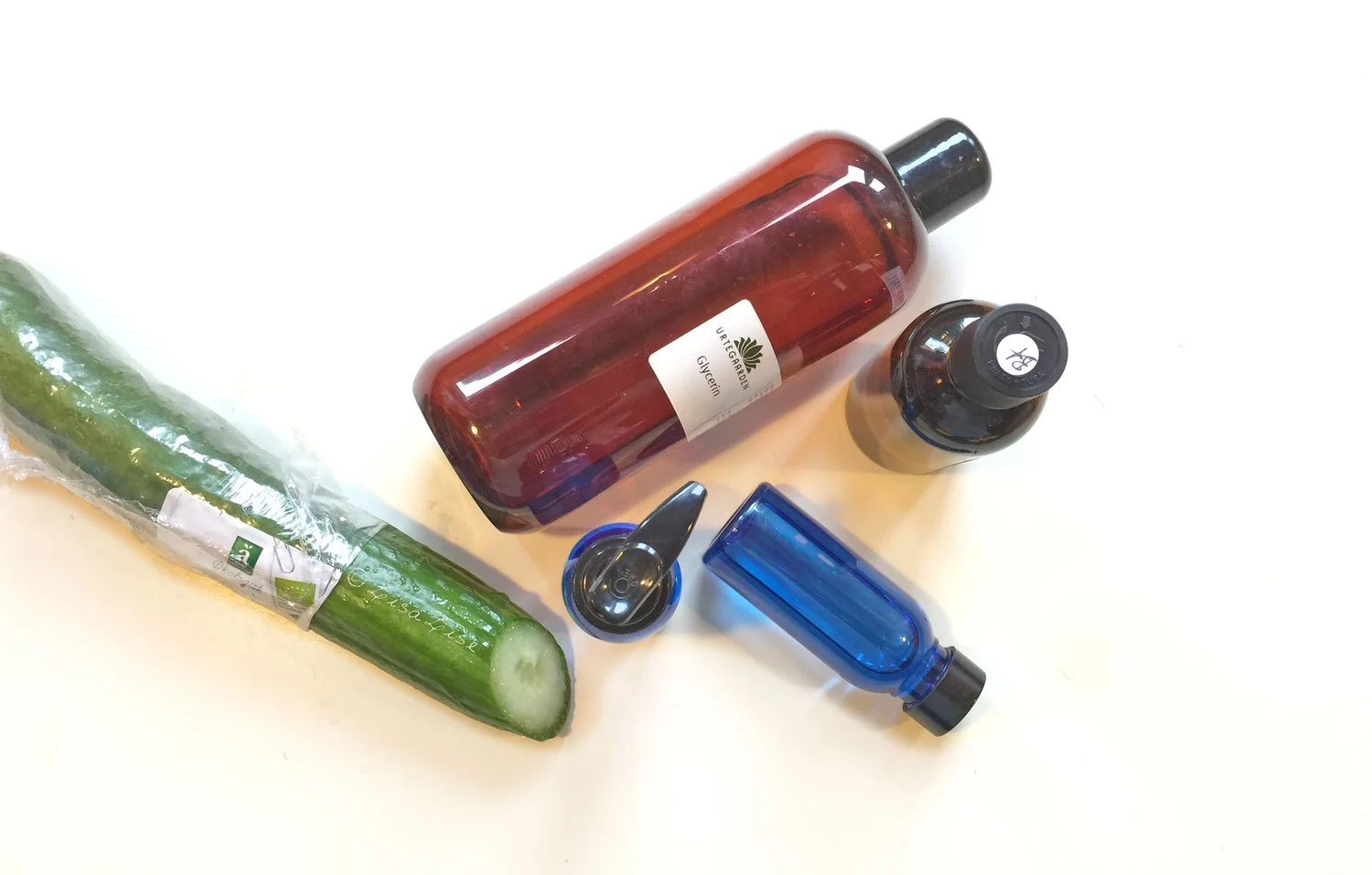How to Make a Glycerite with Fresh Cucumber
Lise
Today we’re revisiting one of the first glycerites I shared on the blog and a kickstarter to my passion for making and using glycerites with fresh foods in my cosmetics. I’ve pepped up the original pictures and added a few extra tips, so let’s get started!
Why Glycerites?
Glycerine extracts (or glycerites) are useful alternatives for folks who may not want to use tinctures (alcohol extracts) in their products, but glycerites also have additional advantages. Glycerine (also spelled glycerin) is an excellent humectant that doubles as an ideal solvent for many botanical constituents.
In short: a glycerite is glycerine with 'added botanical power' – the perfect addition to your lotions, creams, skin tonics and mists, serums, cleansers, and more.
Let’s make a fresh cucumber glycerite!
Water to Glycerine - How Much?
If you follow classic herbalist glycerite making instructions, you’ll find a common ratio of water to glycerine is 50/50, so for this batch, we're going to take our inspiration from there.
Fresh cucumber is about 96% water, so the percentages for this batch are
Glycerine 50.0 %
Cucumber 49.4 %
Preservative 0.6 %
Calculate the Batch
I am making a relatively small batch here (200 grams), so my batch amounts look like this.
Glycerine: 100.0 grams
Cucumber (organic): 98.8 grams
Preservative (I used benzyl alcohol): 1.2 grams
Method
Sanitize your workspace, containers and equipment and pop on protective gloves
Peel and slice the cucumber (I peel even organic cucumbers - but that's just me. Feel free to include the peel if you like. Remember to thoroughly wash/rinse the cucumber before slicing if you include the peel)
Weigh cucumber
Weigh and add glycerine
Weigh and add preservative
Give the mixture a stir
Place lid on container
Keep container away from direct light in a not too warm area
Agitate daily for 5-10 days
Straining
If you used cucumber slices as I have here, you’ll notice that the slices start looking a bit shrivelled. That’s a good sign that your glycerite is ready for straining.
Before straining, be sure your equipment and containers are sanitised. (the funnel you are using is equipment too!)
Place a funnel into a container and line the funnel with a filter. Coffee filters are fine but you could also use a finely woven piece of muslin/cotton. In this picture. I am using a doubled-up piece of silk jersey.
Strain the mixture
Bottle
Label
Storage and Use
Store your glycerite cool and dark and use in your cosmetics within 6 months of making.
Glycerites can (and will) last much longer if made and stored properly, but I generally recommend using a handcrafted glycerite within 6 months of making.
Why?
Because when it is used as an ingredient in a cosmetic, that cosmetic is expected to have a certain shelf life.
Enjoy!
Want more glycerite making information? The book below might be just the thing you’re looking for.





